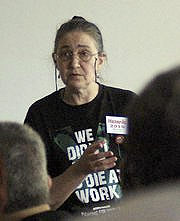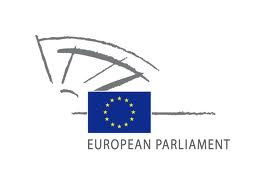PVC The World's Most Popular Hazardous Plastic
 Hilda Palmer from Hazards campaign has alerted union safety reps to a new report which shows that PVC is one of the most hazardous plastics due to the carcinogenic chemicals ( Cadmium, Lead, Phthalates) required to be added during it's manufacture.
Hilda Palmer from Hazards campaign has alerted union safety reps to a new report which shows that PVC is one of the most hazardous plastics due to the carcinogenic chemicals ( Cadmium, Lead, Phthalates) required to be added during it's manufacture.
Indeed, as far back as 2000, the European Commission was concerned about the effects of PVC manufacture on the environment and issued a Green Paper intended to be the basis of further discussion and possible legislation.
The health concerns range from emission of dangerous chemicals from items bought for the home and children's toys to dangerous emissions from PVC when burnt or otherwise disposed of.
The American website, Center for Health, Environment & Justice gives details of the Swedish study into the most commonly used plastics in the world. The organisation issued a press release on 22nd June, part of which is reproduced below:
"A new study by researchers at the University of Gothenburg in Sweden ranked the environmental health hazards of the most common plastics on the market.
Researchers ranked PVC as the most widely used “hazardous” plastic and found that, “PVC should receive extra attention because of its carcinogenic monomer, being the third largest plastic, and requiring the most and often several hazardous additives.”
The researchers also found that:
” Of the polymers ranked as most hazardous, PVC, is by far the most used one, being the third largest plastic type with a global annual production of 37 million tonnes .”
” PVC requires by far the most additives of all plastics types, alone accounting for 73% of the world production of additives by volume…”
” The polymers ranked as the most hazardous ones are made of monomers classified as either carcinogenic or both carcinogenic and mutagenic (category 1A or 1B). These belong to the polymer families of polyurethanes, polyacrylonitriles, polyvinyl chloride, epoxy resins, and styrenic copolymers (ABS, SAN and HIPS).”
73% of the world’s production of additives by volume! The most widely used hazardous plastic!
The researchers studied 55 plastic polymers and developed a “hazard ranking model” to compare them all. For example, the authors looked at whether or not the chemicals used to make the plastics are considered to be carcinogenic, mutagenic or toxic for reproduction (CMR’s), and are persistent bioaccumulative toxic (PBT’s), etc. The researchers also looked at whether plastics contain endocrine disruptors, such as DEHP and the other phthalates commonly found in vinyl products such as flooring."
The CHEJ press release, in response to the studies findings goes on to say:
"There are of course gaps in the study. For example they didn’t appear to take enough of a look at the PVC industry’s growing use of mercury and coal in China to make the plastic, and also PVC’s leading contribution to dioxin across the world. That’s a key reason why the US Green Building Council concluded in their evaluation of PVC that “When we add end-of-life with accidental landfill fires and backyard burning, the additional risk of dioxin emissions puts PVC consistently among the worst materials for human health impacts…”
The CHEJ website also provides a list of items found in the home, from shower curtains to children's car seats, which contain PVC. The list can be viewed here
 In Europe, as far back as 2000, the European Commission looked at the whole issue of PVC and the effect on the environment and produced a Green Paper, and requested responses from member states and the public.
In Europe, as far back as 2000, the European Commission looked at the whole issue of PVC and the effect on the environment and produced a Green Paper, and requested responses from member states and the public.
In a press release issued 26th July 2000, Environment Commissioner Margot Wallström and Entreprise Commissioner Erkki Liikanen welcomed the adoption by the Commission of the Green Paper on environmental issues of PVC.
Mrs Wallström declared: "PVC waste is likely to increase by 80% by 2020. This is a problem we must address now. The Green Paper is a major step in launching for the first time a Europe-wide public consultation on the environmental issues of PVC, which is one of the most widespread plastics in use today. We look forward to hearing the views of industry, NGOs, the European Parliament, and the Member States themselves."
Mr Liikanen added: "We also have to address the environmental issues posed by certain additives used in PVC. It is important for us, at this stage, to keep an open mind on the options outlined in the Green Paper. A range of measures is available to implement a Community strategy on PVC and will have to be considered during the consultation process."
The Green Paper is mainly based on the results of a comprehensive study programme launched by the Commission in 1999-2000, which examined all relevant aspects. Studies dealt with mechanical recycling, chemical recycling, landfill, incineration, and the economic implications of a diversion of PVC waste from incineration.
A number of issues regarding PVC and its impact on the environment have been identified and analysed in the Green Paper:
-
The PVC industry and its products: structure of the industry, production processes, range of products, economic importance
-
Additives: quantities used, hazards, and risks of additives, in particular heavy metal stabilisers and phthalate plasticisers
-
Management of PVC wastes: current quantities and treatment routes, future development
-
Recycling of PVC wastes: processes and potential quantities for mechanical and chemical (feedstock) recycling and other technologies
-
Incineration of PVC wastes: technologies, residues, costs of incineration, evaluation of a potential diversion of PVC from incineration
-
Landfilling of PVC wastes: behaviour under landfill conditions.
The Green paper lists a range of measures, mandatory as well as voluntary, that are available to implement a horizontal Community strategy on PVC in order to address the problems that have been identified during the above mentioned analysis.
In April 2001 the Commission adopted a resolution on the Commission Green Paper on environmental issues of PVC. The resolution can be found here
The UK government at the time, issued their response to the Green Paper, saying they welcomed the paper and its recommendations.
Both the European Commissions Green Paper and the UK government's response can be found in the E-Library Database by choosing the category of "Environment".
An abstract of the Swedish study into PVC can be viewed here
Details of the European directive on waste management can be found here
Source: CHEJ / European Commission / Hilda Palmer



 In Europe, as far back as 2000, the European Commission looked at the whole issue of PVC and the effect on the environment and produced a Green Paper, and requested responses from member states and the public.
In Europe, as far back as 2000, the European Commission looked at the whole issue of PVC and the effect on the environment and produced a Green Paper, and requested responses from member states and the public.